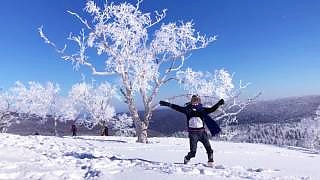 ZiXing city and DongJiang Lake, HuNan province
ZiXing city and DongJiang Lake, HuNan province
Related Videos
Featured Videos

|
Bonus film - QingDao (a port city south east of BeiJing) ...
Bonus film 2 - TianJin (a port city a little to the east of BeiJing) at Christmas ...
Bonus film 3 - MiuMiu Guitar girl ...
|

|
With Alan Watts ...
|

|
One of China's most complete ancient cities, it was formerly named XiangFan.
With Walk East ...
|

|
History and Culture Tour of China
Week 1-2: Beijing and Surroundings
Explore Beijing's historical sites, including the Forbidden City, Temple of Heaven, and Summer Palace.
Hike the Great Wall of China and visit the Ming Tombs.
Explore the ancient imperial city of Pingyao and the Yungang Grottoes.
Week 3: Xi'an and Shaanxi Province
Visit the Terracotta Army and explore the ancient city walls of Xi'an.
Discover the historical sites along the Silk Road, including the Giant Wild Goose Pagoda and Shaanxi History Museum.
Explore the ancient cave dwellings of Yan'an.
Week 4: Cultural Highlights Tour
Visit the ancient water towns of Suzhou and Zhouzhuang.
Explore the traditional villages of Fujian's Hakka Tulou.
Discover the Confucian temples and traditional gardens of Shandong Province.
|

|
|

|
The 'and everyone else' is the part most don't get. And it is true even if you are in the US. Everyone 'else'.
Weather balloons, earthquakes, pipelines and more, with George Galloway, Bryce Greene and Jamie Wright ...
With Garland Nixon on the pipeline ...
With Danny HaiPhong ...
With The New Atlas and Angelo Giuliano on the US war plans to enforce its hegemony ...
Hegemony - keeping everyone else down; divide and rule.
|

|
As the mini ice-age begins to engage (and the 'global warming' hoax lies in tatters) - a reprieve of our much-loved 'Winter in China' mix; with great music, including ColdPlay and much more ...
|
Tag search ?

 ZiXing city and DongJiang Lake, HuNan province
ZiXing city and DongJiang Lake, HuNan province






